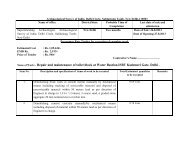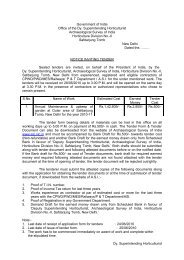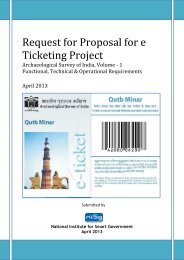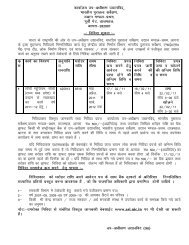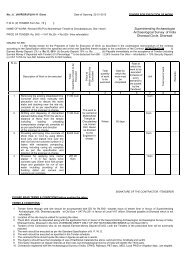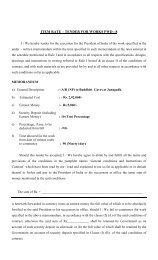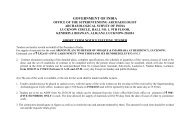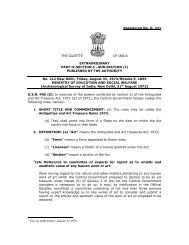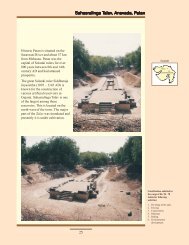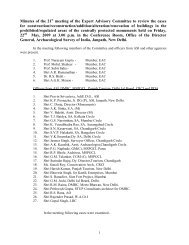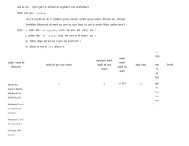Executive Summary - Archaeological Survey of India
Executive Summary - Archaeological Survey of India
Executive Summary - Archaeological Survey of India
You also want an ePaper? Increase the reach of your titles
YUMPU automatically turns print PDFs into web optimized ePapers that Google loves.
The conservation plan is based on an evaluation <strong>of</strong><br />
the significance <strong>of</strong> the buildings and open spaces,<br />
their condition and several other factors which are<br />
incorporated in the inventory form. Based on this<br />
information, each component <strong>of</strong> the site was<br />
assessed for its significance (historic, associational,<br />
architectural, artistic, educational, locational) and<br />
conservation intervention determined in terms <strong>of</strong><br />
‘retain’, ‘restore’, ‘recover’ or ‘reconstruct’.<br />
For the purposes <strong>of</strong> survey, documentation and<br />
organization <strong>of</strong> information, the Red Fort has been<br />
divided into 16 precincts. The buildings and<br />
structures are approximately 500 in number and falls<br />
into three time periods: Mughal (43) (1638-1856),<br />
colonial (64) (1857-1947) and modern (360) (1948-<br />
2004). There are 27 open spaces and gardens <strong>of</strong> the<br />
Mughal period which were completely transformed<br />
during the colonial period.<br />
their condition and several other factors which are<br />
incorporated in the inventory form. Based on this<br />
information, each component <strong>of</strong> the site was<br />
assessed for its significance (historic,<br />
associational,architectural, artistic, educational,<br />
location) and conservation intervention determined<br />
in terms <strong>of</strong> ‘retain’, ‘restore’, ‘recover’ or<br />
‘reconstruct’.<br />
For the purposes <strong>of</strong> survey, documentation and<br />
organization <strong>of</strong> information, the Red Fort hasbeen<br />
divided into 16 precincts. The buildings and<br />
structures are approximately 500 in number and falls<br />
into three time periods: Mughal (43) (1638-1856),<br />
colonial(64) (1857-1947) and modern (360)(1948-<br />
2004). There are 27 open spaces and gardens <strong>of</strong> the<br />
Mughal period which were completely transformed<br />
during the colonial period. This information enables,<br />
among other things, an understanding <strong>of</strong> the<br />
various typologies <strong>of</strong> buildings and open spaces as<br />
they existed in the Mughal and later periods. It<br />
further helps to decide the nature, level or urgency<br />
<strong>of</strong> conservation interventions possible or necessary<br />
in these buildings and open spaces. An assessment<br />
<strong>of</strong> the buildings for possible use was important for<br />
the revitalization <strong>of</strong> the site. This information will<br />
help the site managers to develop appropriate<br />
management and maintenance systems.<br />
Comprehensive Conservation Management Plan,<br />
RED FORT, DELHI<br />
A collaborative project <strong>of</strong> ASI and CRCI<br />
FINAL-March 2009<br />
EXECUTIVE SUMMARY<br />
Figure 0.4a: Built Assests in Red Fort<br />
Complex, CCMP, Map, 2006<br />
0-7




